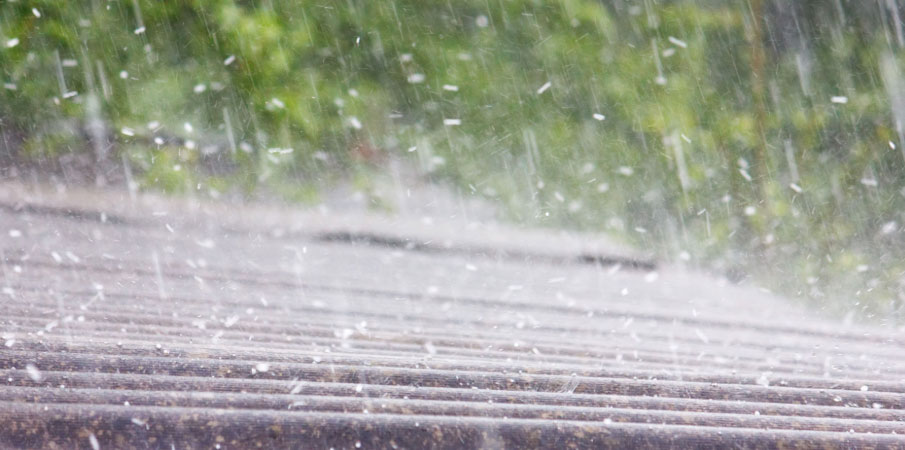
Making a Successful Hail Damage Home Insurance Claim In Houston
Economic and insured losses from natural catastrophes in the U.S. were substantially above the long-term average in 2021. The overall monetary total was estimated at $169 billion, with insurers covering nearly $92 billion. According to the NOAA’s Severe Storms database, Texas had the most major hail events, citing 601 out of the 4,611 major hailstorms in the country.
While hail damage may be covered in standard home insurance, that coverage may be impacted by the proximity of a property to the coast. Therefore, it is best to consult with a Houston insurance claims lawyer who can explain how coverages are applied relevant to the impacts of property damage caused by hail events at a policyholder’s specific location near Houston.
What Should Homeowners Know About Filing Hail Damage Insurance Claims?
The most important thing to know about hail damage in a wild weather state like Texas is its effects can be deceptive. Although appearing cosmetic, they can cause serious long-term issues like weak spots in the roof or siding and other structural integrity issues.
For these reasons, it is crucial to contact an experienced contractor to assess the damage immediately after a hail event. It’s also important to report the damage as soon as possible to your insurance provider, as many providers place time limits on claims.
Houston and Hail Damage
In 2021, the Houston area was impacted by hail conditions on March 17th, with 1-inch hail reported affecting residents living in the 77055 zip code, and again with six reports on June 15th, with 1-inch hail within ten miles of the city affecting residents of the 77018 zip code. Hail-related insured losses between 2000 and 2019 averaged $8 billion to $14 billion yearly.
Homeowners who have questions surrounding hailstorm damage claims should consult with insurance lawyers who can explain how policy language and included perils will affect payment outcomes for Houston residents. McClenny Moseley & Associates legal professionals will act on behalf of clients when an insurance company adjusts a claim by downgrading the extent of damage in an attempt to underpay or deny a Houston homeowner’s loss after a hailstorm, violating the protections of the Texas Insurance Code.

Homeowners Insurance Policies and Hail Damage
A hail damage attorney can explain the difference between a named perils policy and a comprehensive coverage policy and how that may impact hailstorm damage claims processing for Houston residents. For example, if a roof is damaged during a hailstorm in Houston, Texas, property owners should be able to make a property damage claim and have it replaced or fixed within a timely manner to avoid any subsequent damage to the building structure or personal belongings inside the home.
However, some professional resources may be necessary to build a case for maximum damages as they measure hail by intensity that can cause minimal damage, destructive damage, to super hailstorms that destroy a home’s infrastructure.
Hail is measured by intensity on a scale of H0 to H10 according to TORRO, a weather research group based in the United Kingdom), and Hailstrike, a Texas weather forensics company.
- H0: 0.2 – 0.4 inches. Pea-sized hail. Usually does no noticeable damage.
- H1: 0.2 – 0.8 inches. Mothball-sized hail. Makes holes in plants.
- H2: 0.2 – 1.2 inches. Grape-sized hail. Strips leaves off plants and damages garden vegetables.
- H3: 0.4 – 1.8 inches. Walnut-sized hail. Breaks glass, scrapes paint and wood, and dents metal.
- H4: 0.6 – 2.4 inches. Table tennis ball-sized hail. Breaks windows, scrapes paint, kills birds.
- H5: 0.8 – 3 inches. Golf ball-sized hail. Breaks roof tiles, dents cars, strips tree bark and cuts through branches, kills small animals
- H6: 1.2 – 3.9 inches. Jumbo egg-sized hail. Punches through roof shingles, breaks window frames, leaves scoring in metal.
- H7: 1.8 – 4.9 inches. Tennis ball-sized hail. Shatters roofs, breaks window frames, heavy damage to cars.
- H8: 2.4 – 5 inches. Softball-sized hail. Destroys shingle, or tile roofs, damages concrete roofs, small trees are split or knocked over, humans risk serious injury.
- H9: 3.2 inches and up. Grapefruit-sized hail. Concrete roofs are broken or destroyed, wooden walls are damaged, large trees are split or knocked over, humans risk fatal injuries.
- H10: 4 inches and up. Melon-sized hail. Brick and wooden walls are damaged, humans risk fatal injuries.
Steps to Take Before Filing Hail Damage Claims
Unfortunately, insurance companies aren’t in the business of paying out claims, and most will use every tool at their disposal to deny or reduce the amount they pay out to you after hail damage. Keeping this in the back of your mind, we recommend the following steps to give your claim the best chance possible for success:
- Get an estimate from a reputable contractor to help you negotiate (yes, negotiations with your insurance company!)
- Take photos or videos of the damage with time and date stamps.
- Keep receipts for any repairs you make.
- Contact your insurance agent as soon as possible after the damage occurs.
- Be prepared to negotiate, and consider engaging experienced insurance attorneys to help you.
Homeowners should document all items that have been damaged, even damages that seem minimal, caused by a hailstorm. For example, walls and ceilings may need to be replaced, as well as carpets, drapes, clothing, and family heirlooms that may have received extreme weather damage after hail pierced a window, roof, or door.
Policyholders should not try to clean the house themselves, as mold and related particles may cause health issues. Instead, insurance claims should pay for professional cleaning if a covered storm caused damage to the interior of the home structure.
Report to TWIA and Talk to an Attorney at MMA
When problematic hailstorm damage claims occur, the carrier should be contacted and/or TWIA at 1-800-788-8247. They will request policy and claim numbers before proceeding with the claim investigation. Therefore, it is prudent for policyholders to make any requests in writing and keep a copy.
In addition, policyholders should consult with a hail damage claim attorney at MMA Law Firm. Our main priority is protecting insurance policyholders against bad faith insurance practices.
This blog published by MMA Law Firm is available for informational purposes only and is not intended to be legal advice on any subject matter. The content available on this website may not constitute the most up-to-date legal or other information.